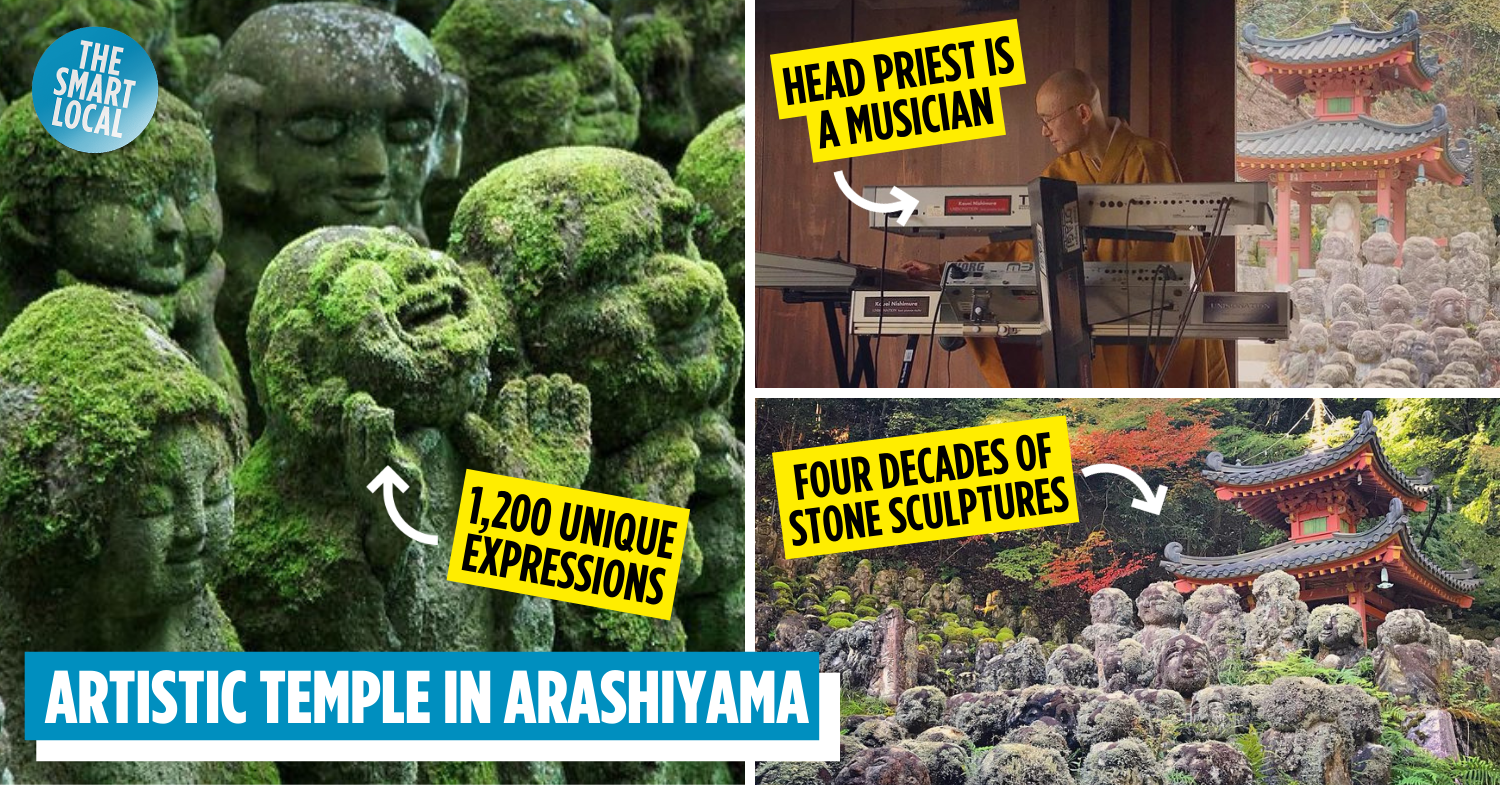Otagi Nenbutsu-ji
Tucked away in a quiet corner of Arashiyama, Otagi Nenbutsu-ji is a hidden gem hand-crafted by decades of innovative art forms. At this temple, you’ll find whimsical stone sculptures expressing diverse emotions, and perhaps find one that you can relate to.
1,200 unique rakan sculptures covered in moss
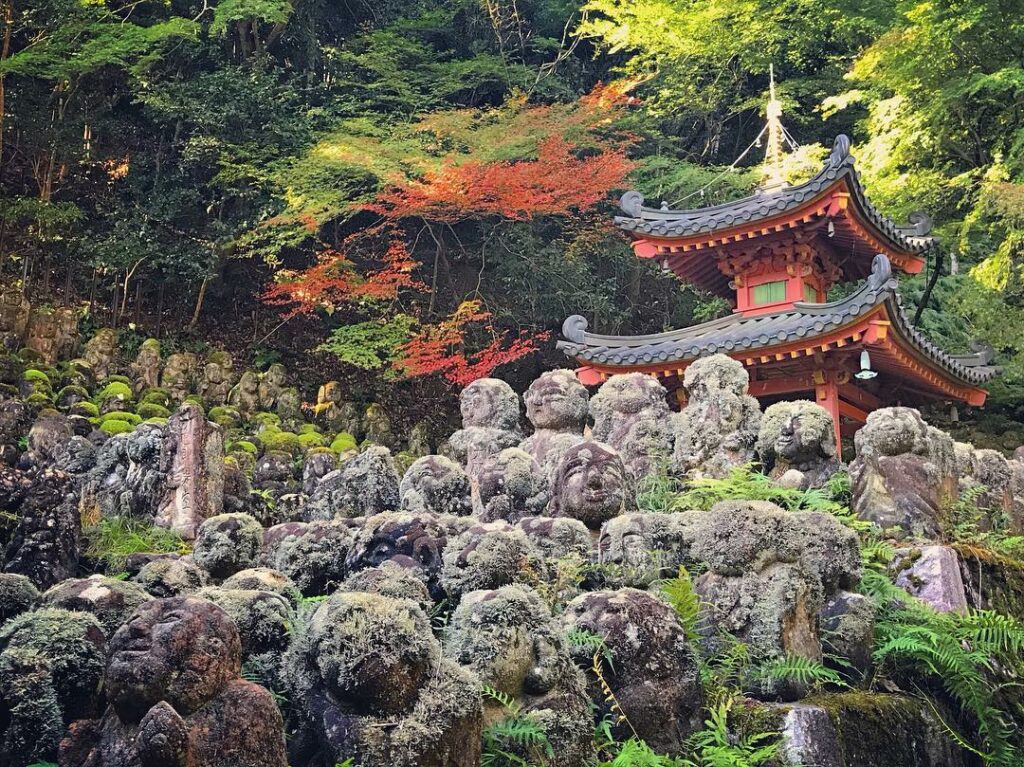
Image credit: @kyoteren
Rows upon rows of stone rakan sculptures line the lush mossy pathways of Otagi Nenbutsu-ji. Visually stunning in their serenity, these sculptures are depictions of Buddha’s disciples who have achieved enlightenment.
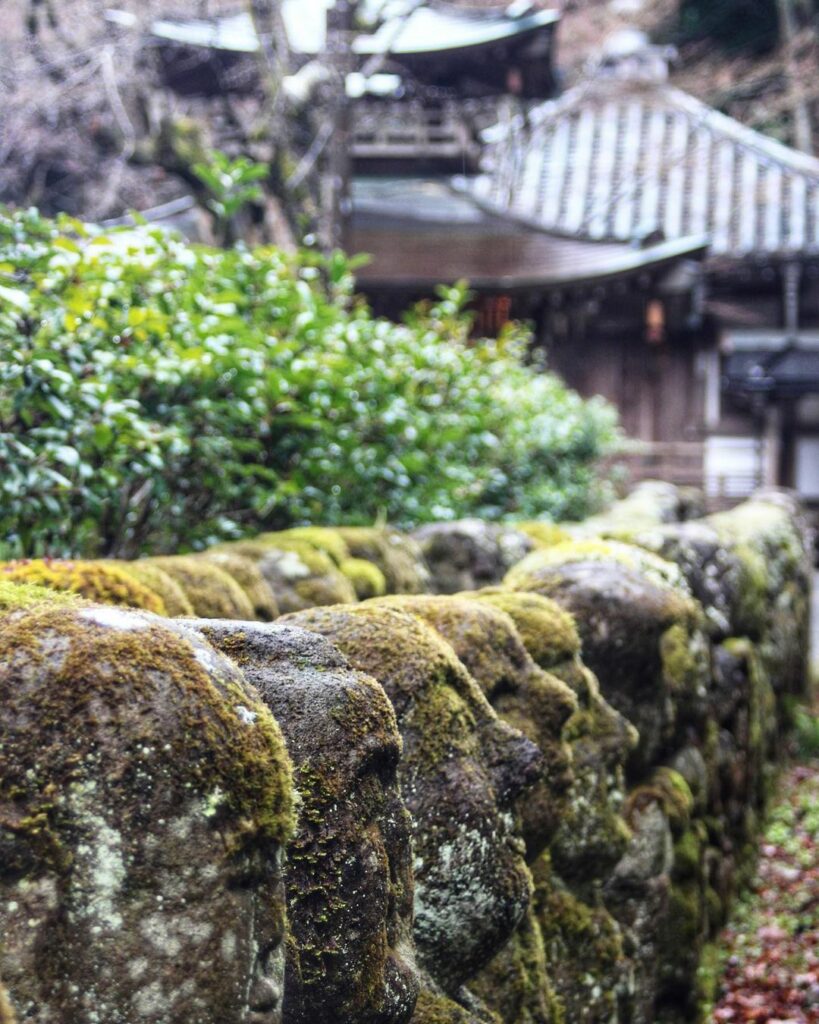
Image credit: @rgrhinsta
Acting like silent guardians of the hillside, an entire wall of rakan sculptures welcome you to the temple.
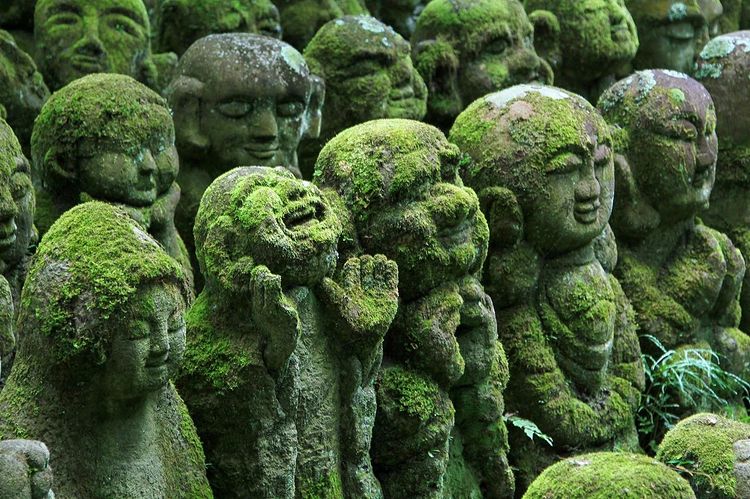
Image credit: @taka_hitf
While most of them are smiling, there are sculptures that sport different kinds of quirky expressions, encapsulating the entire span of human emotions.
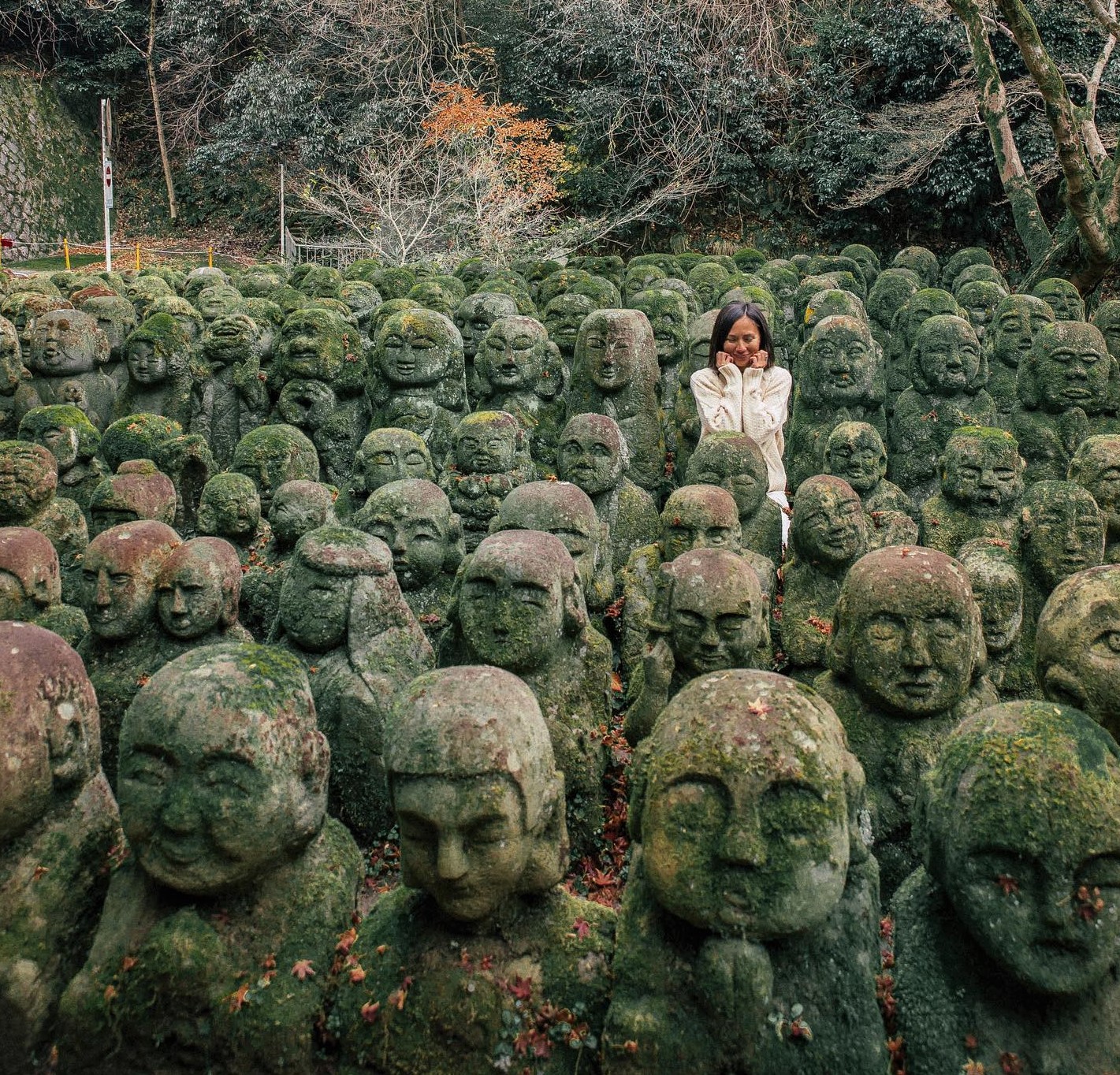
Image adapted from: @bucketlistbums
These creative presentations, while set in stone, are meant to be subject to beholders’ interpretations, so you can gaze into each statue and see yourself in it.
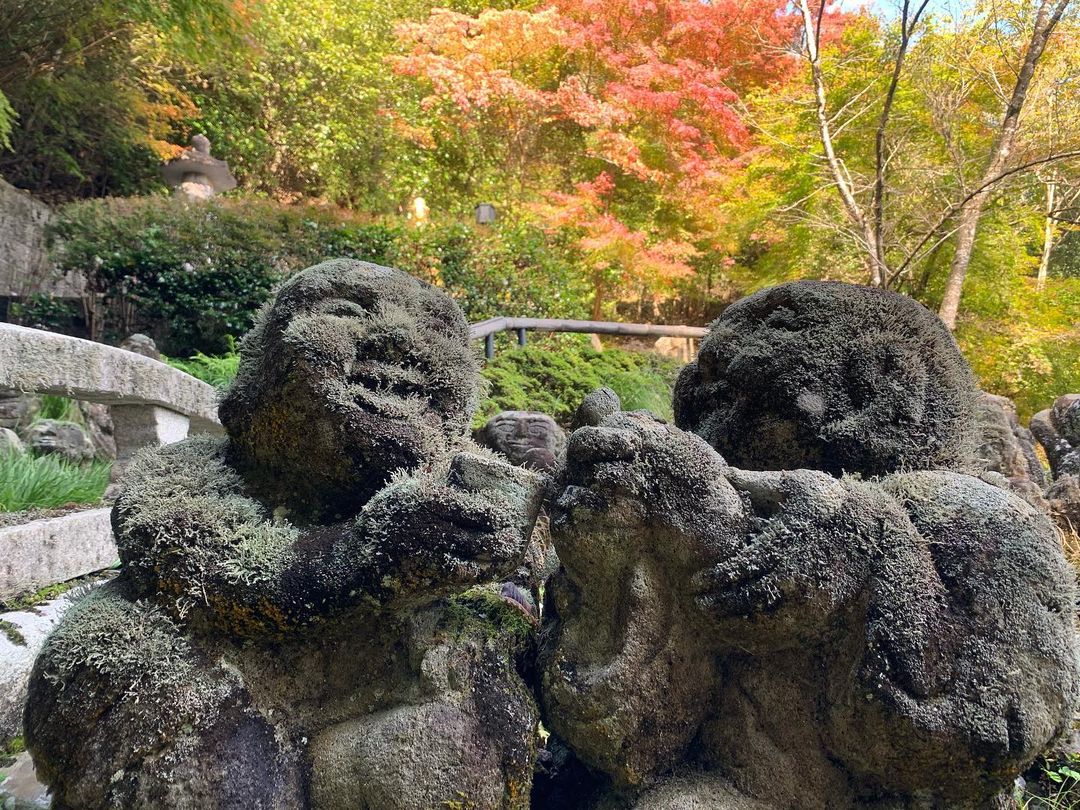
Image credit: @otagiji_official
Little interactions of daily life have also been incorporated into the rakan sculptures. Find a pair of them sharing a good laugh over wine – not quite what you’d expect to find at a Buddhist temple.
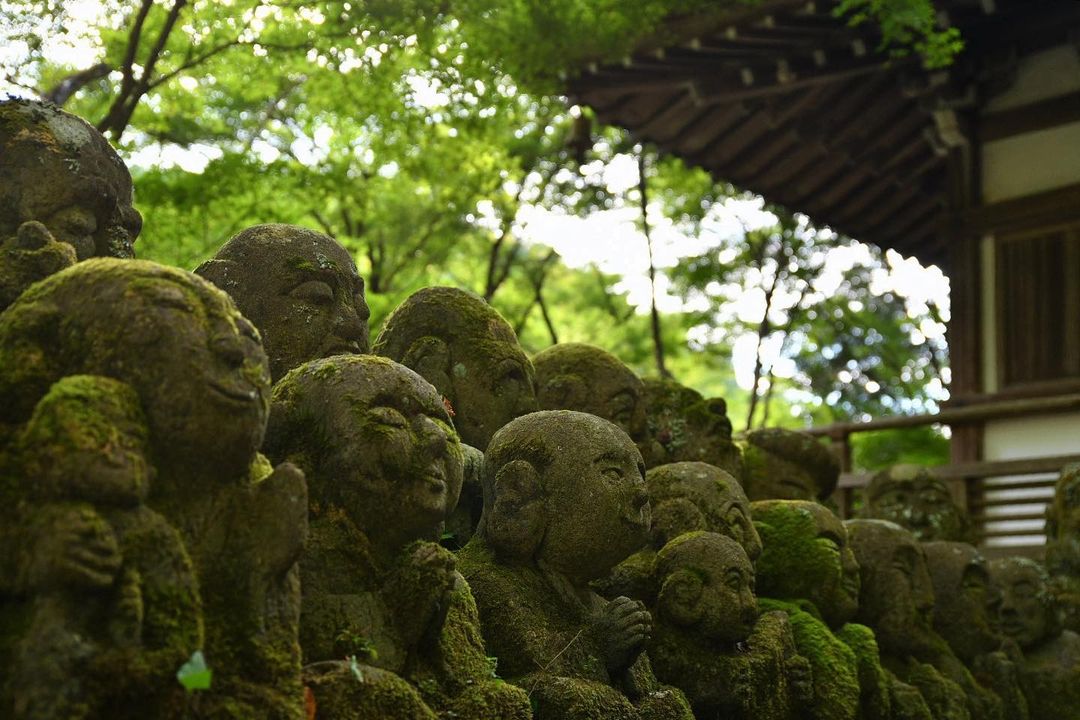
Image credit: @ykomi816
While most of these whimsical sculptures were only made in the past 40 years, the overgrown moss and crumbling rocky surfaces make the haven look more ancient than it actually is.
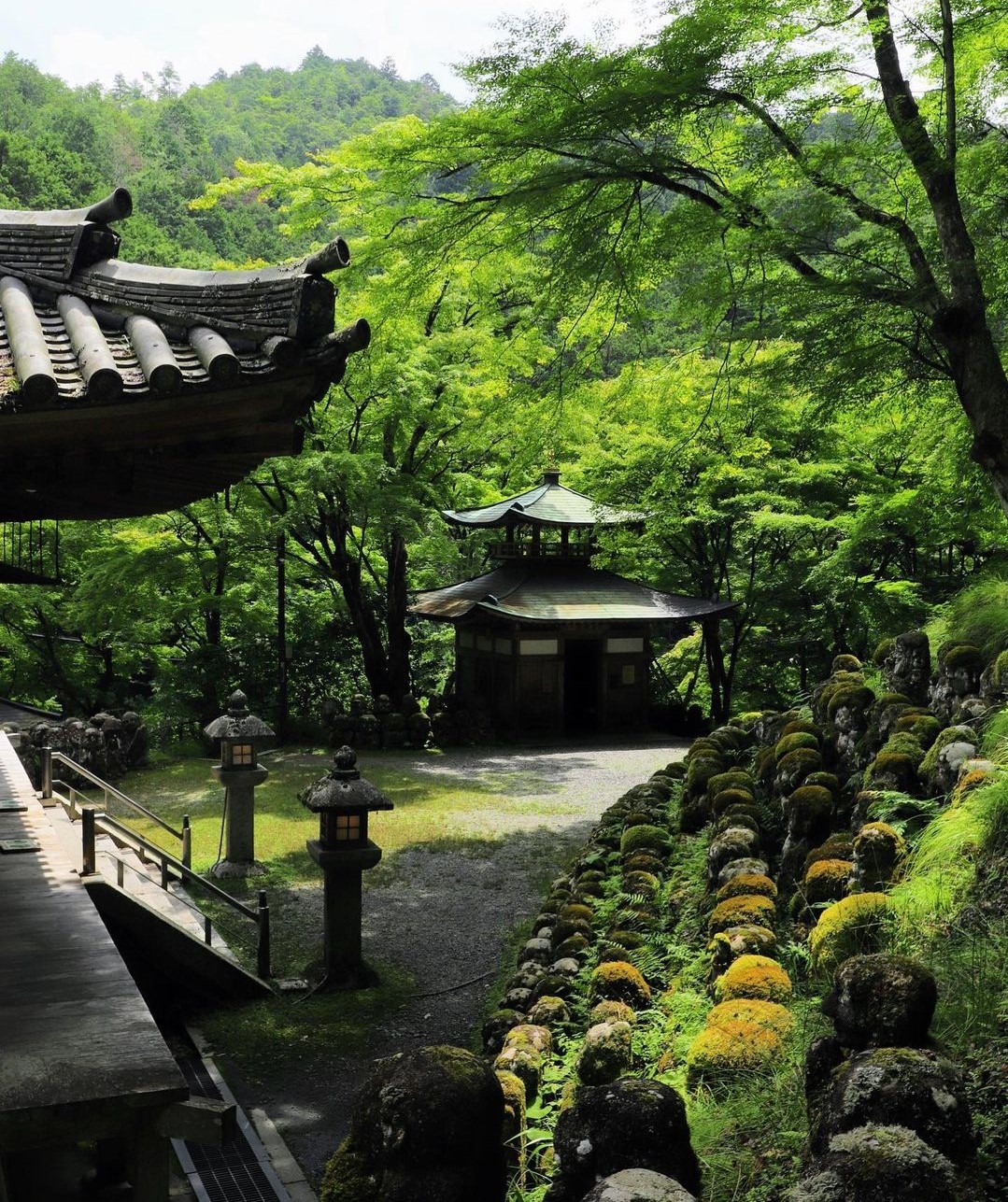
Image credit: @miicco7a
The entire place feels untouched by the modern world, with only time and the elements as its patrons.
Artistic restoration project over three generations
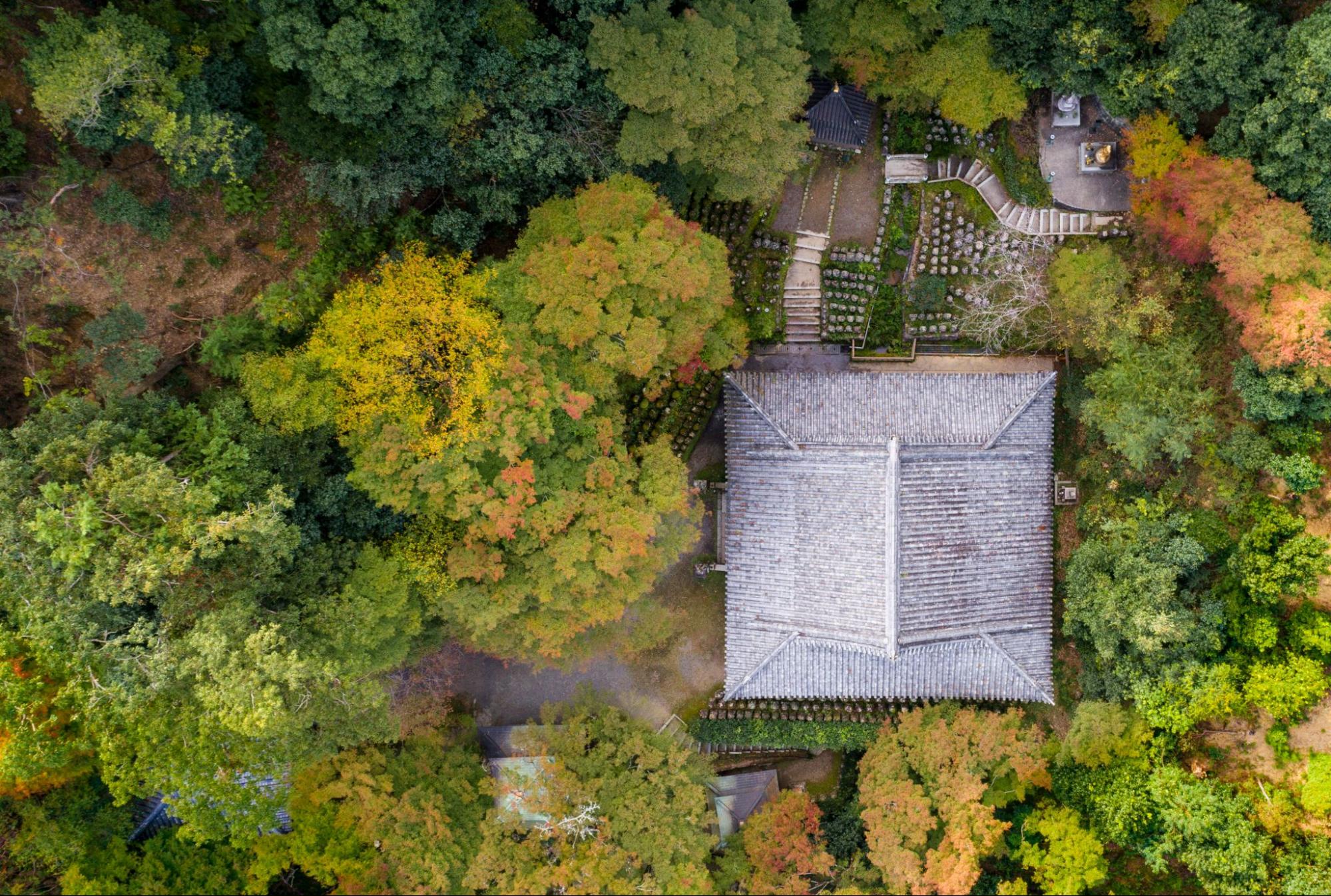
Image credit: Otagi Nenbutsuji Temple
If you’re already wowed by the rakan sculptures, you’d be in awe at the story behind them. The present Otagi Nenbutsu-ji is a legacy of centuries of reconstruction after multiple natural disasters since the beginning of the Heian period (794-1192).
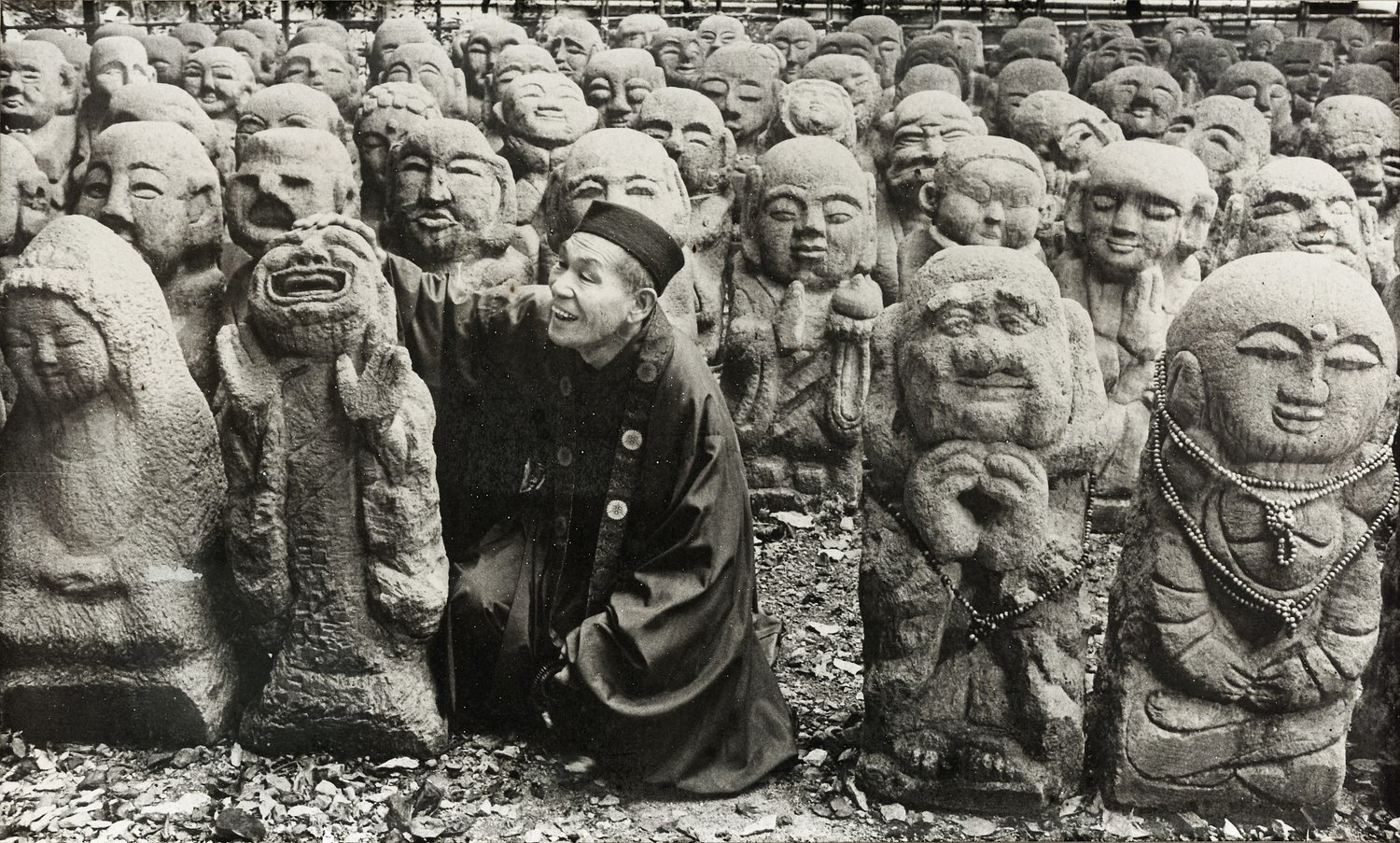
Image credit: Otagi Nenbutsuji Temple
After Buddhist statue sculptor-turned-monk Kocho Nishimura was appointed to be the temple chief, he began the temple’s artistic transformation in 1981.
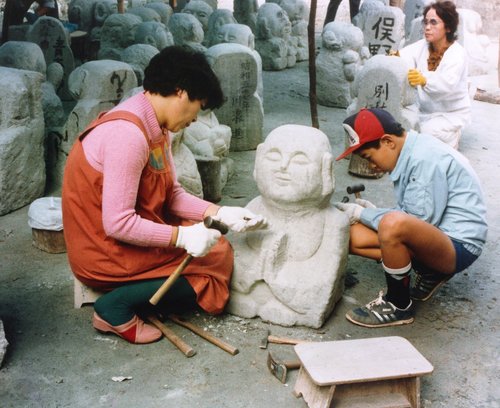
Image credit: Otagi Nenbutsuji Temple
Nishimura’s craft was so well-known that many made a pilgrimage to learn from him. Under his guidance, learners were encouraged to reflect their own individuality in their stone creations.
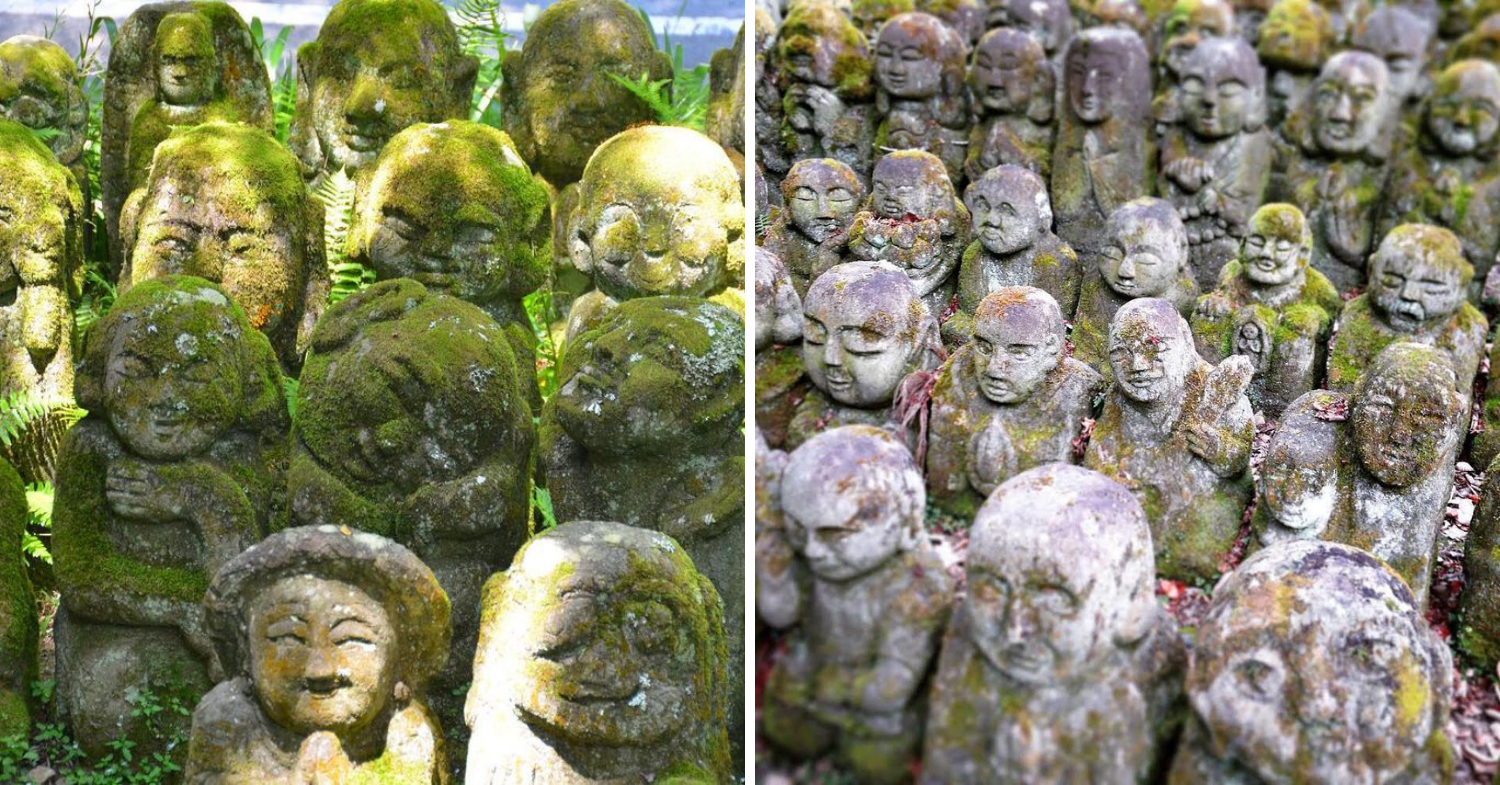
Image adapted from: @mk_kaji_ and @kyoteren
Over time, the small community of sculpting enthusiasts created 1,200 whimsical stone figures. Some of them hold objects that allude to the carvers’ own passions.
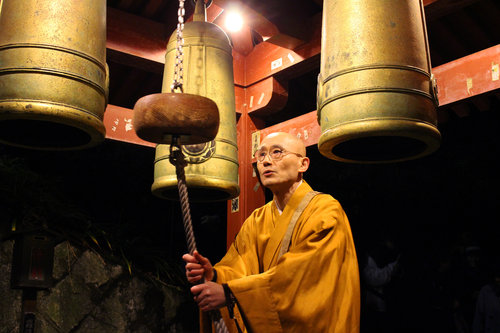
Image credit: Otagi Nenbutsuji Temple
The story doesn’t end here. Now, Nishimura’s son and grandson, both Buddhist priests, continue to practise Buddhist teaching in combination with their own art forms.
Practising Buddhism through electronic music
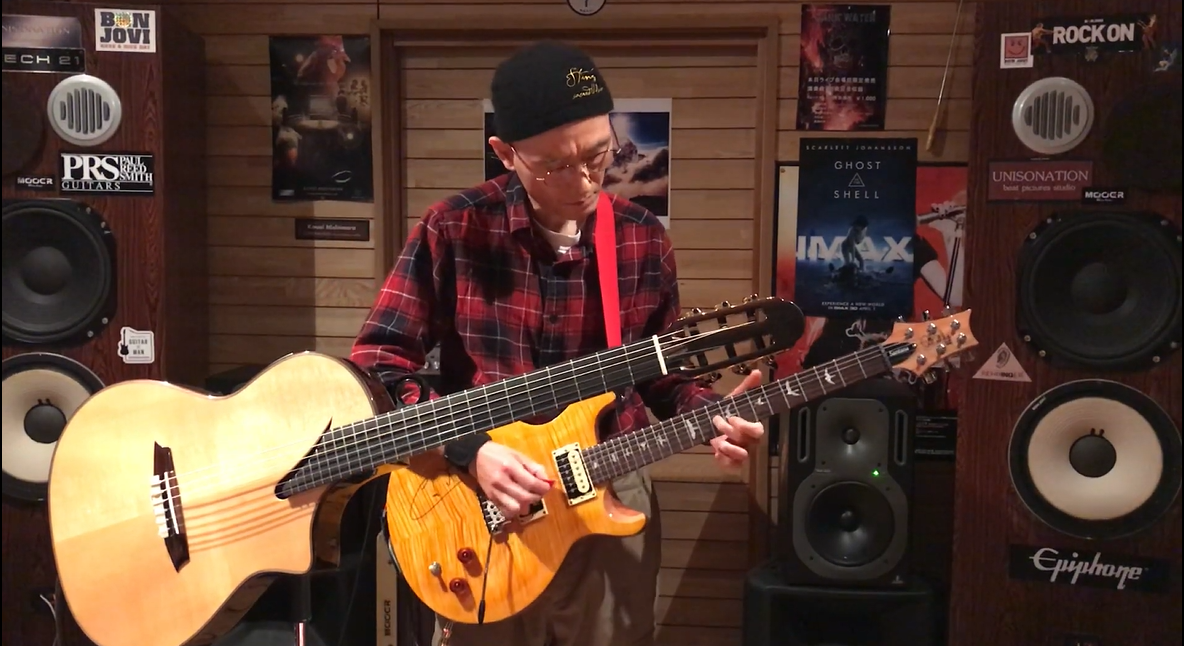
Image adapted from: Kouei Nishimura
The most experimental venture here thus far has to be Kouei Nishimura’s music collaborations, as Otagi Nenbustu-ji might be the only place you’d find a monk jamming away on an electric guitar.
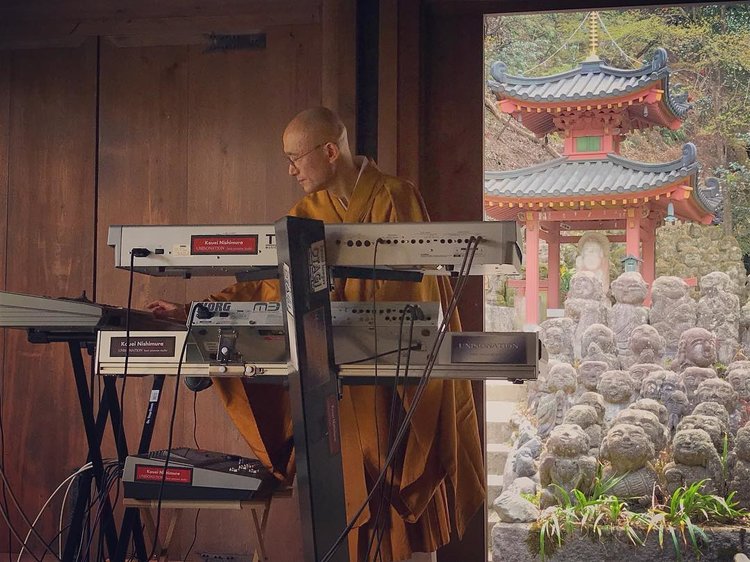
Image credit: Terin Jackson
After taking over the role of head priest from his father in 2003, Kouei Nishimura paved a new direction for the annual hana matsuri (花祭り; flower festival).
Originally, 8th April was a day to celebrate spring renewal on Buddha’s birthday. Now, music appreciation has taken the main stage at the temple’s rendition of the event.
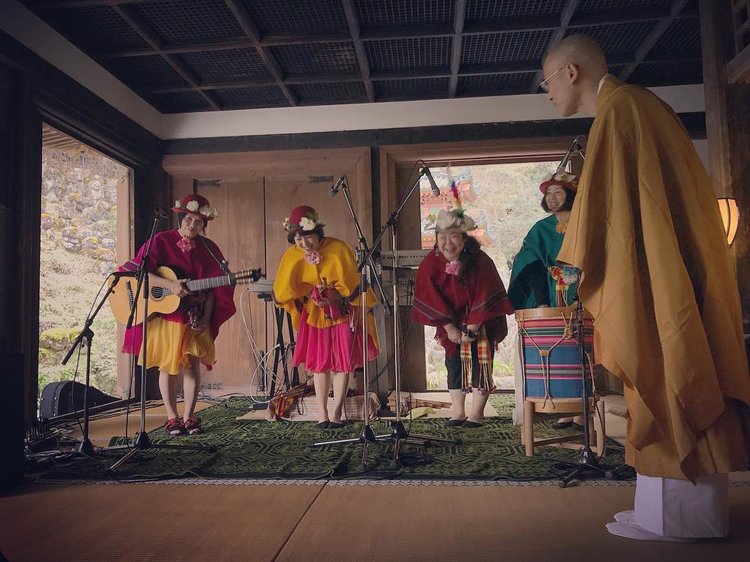
Image credit: Terin Jackson
During the hana matsuri, Kouei Nishimura shares his music, which blends new age synth with classical harmonies, and collaborates with an eclectic assortment of music groups.
In 2020, his guests were Esperanza, a home-grown folklorico group that plays traditional South American instruments.
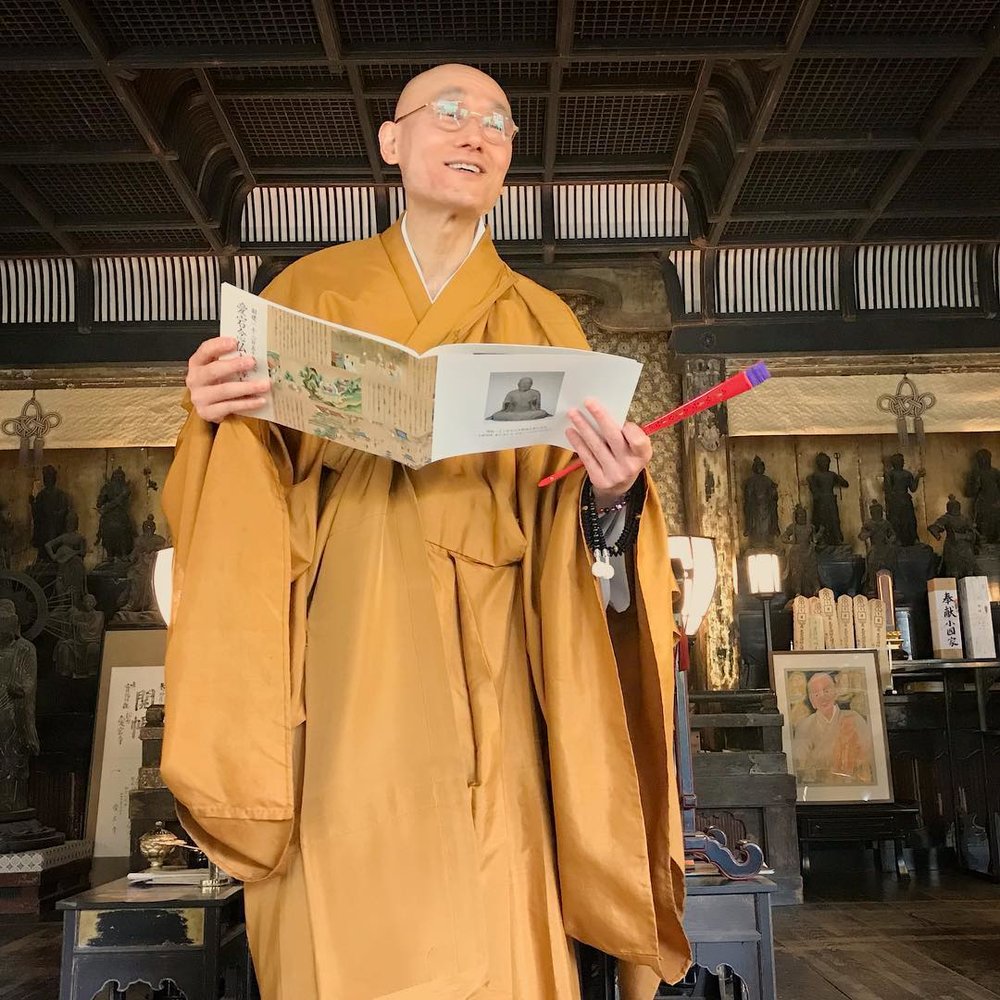
Image credit: Terin Jackson
Similar to his father’s sculptures, Nishimura’s music compositions are based on Buddhist imagery. To him, “the music is the message”.
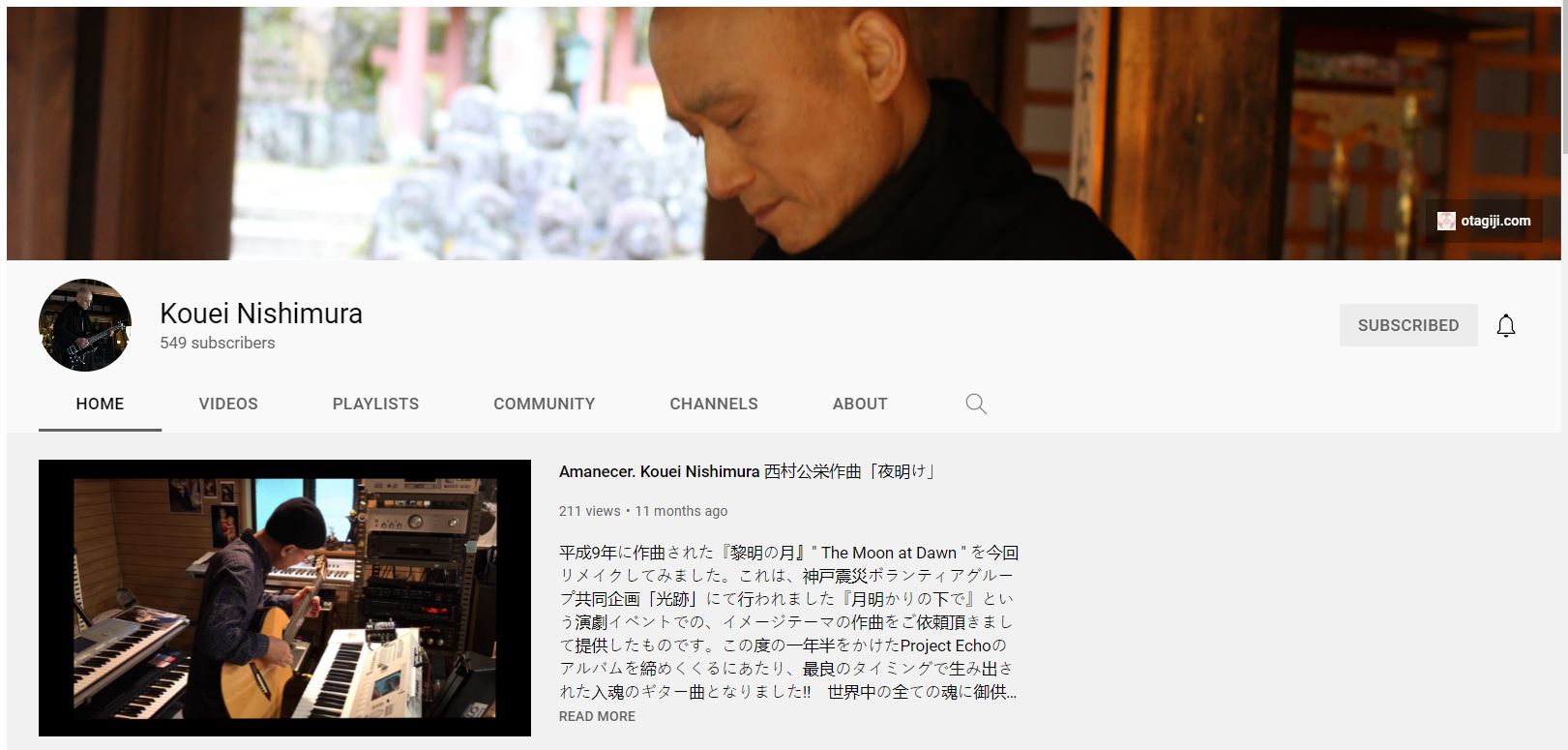
Image adapted from: Kouei Nishimura
The self-taught musician has released dozens of innovative albums that invite listeners into introspection. He also runs a YouTube channel that features his music performances and beautiful seasonal views at Otagi Nenbutsu-ji.
Getting to Otagi Nenbutsu-ji
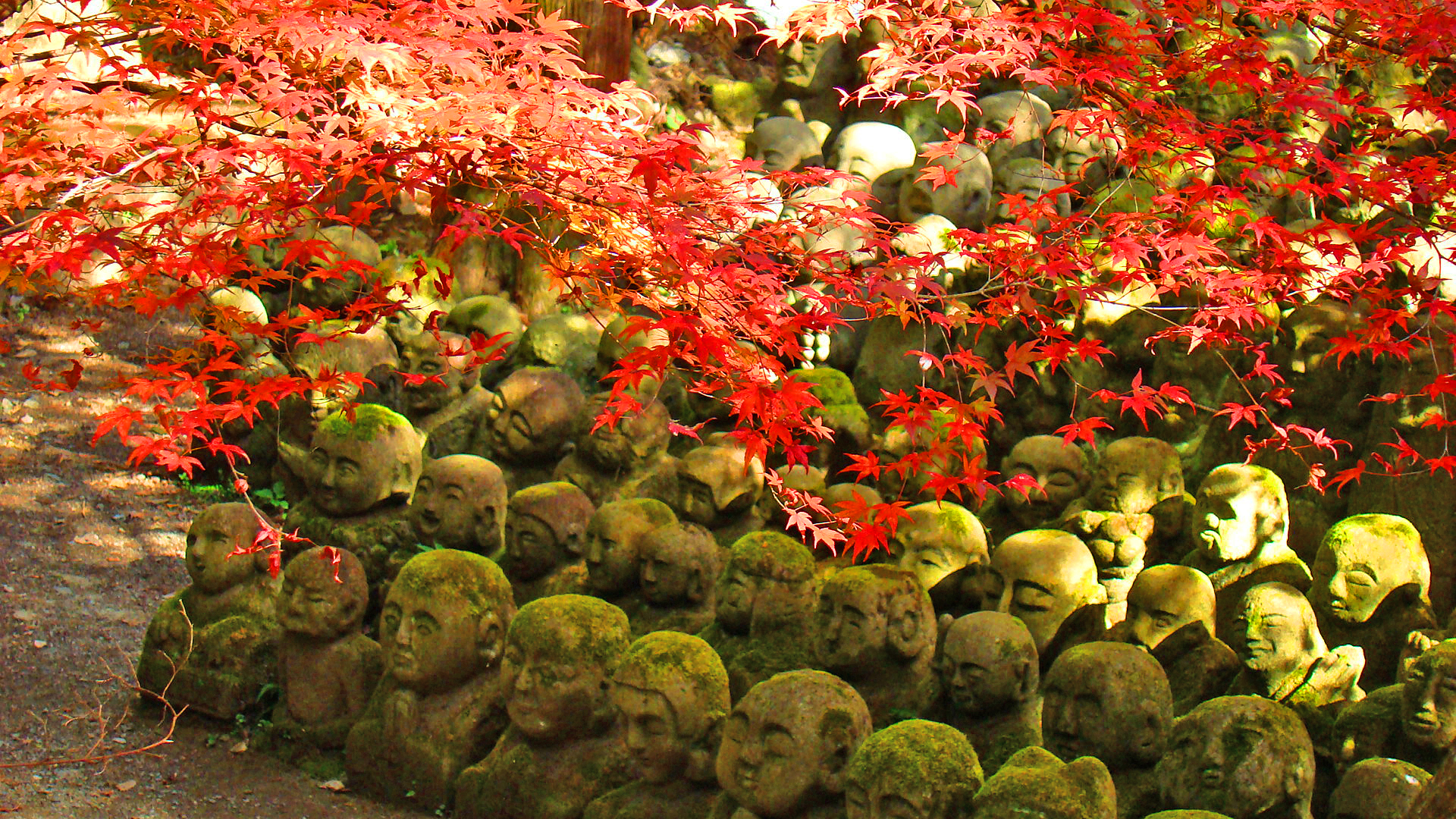
Image credit: Otagi Nenbutsuji Temple
Just a 20-minute walk away from the crowds at Arashiyama Bamboo Grove, Otagi Nenbutsu-ji is a rare autumn foliage spot where you can enjoy the quietness all to yourself. The temple recommends visitors to soak in the sights of Arashiyama’s beauty before making their way over.
How to get there:
- By bus: take bus 62, 72, 92 or 94 in the direction of Kiyotaki-Arashiyama, alight at Otagi-dera mae and walk for 2 minutes to the temple.
- By train: take the JR Sagano Line from Kyoto station to Saga-Arashiyama, then a scenic 30-minute walk past the bamboo grove and Togetsukyo Bridge.
Admission: ¥300 (~USD2.11) for adults, free for 15 years and under
Address: 2-5 Fukatani-cho, Saga-Toriimoto, Ukyo Ward, 616-8439, Kyoto
Opening hours: 8am-4.30pm, Daily
Contact: 0758-65-1231 | Website
Also check out:
- Nanzoin Temple: visit a 41m-long reclining Buddha as big as the statue of liberty
- Adachi Museum Of Art: impressive collection of art & Japan’s best garden since 2003
- Arashiyama Bamboo Grove: popular Kyoto photo spot with natural & historical beauty
- Kankyo Geijutsu no Mori: 360° autumnal view of a forest with 10,000 maple trees
- Japanese Cat Temple: where you can literally worship your feline overlords
Cover image adapted from: @taka_hitf, Terin Jackson, @kyoteren
